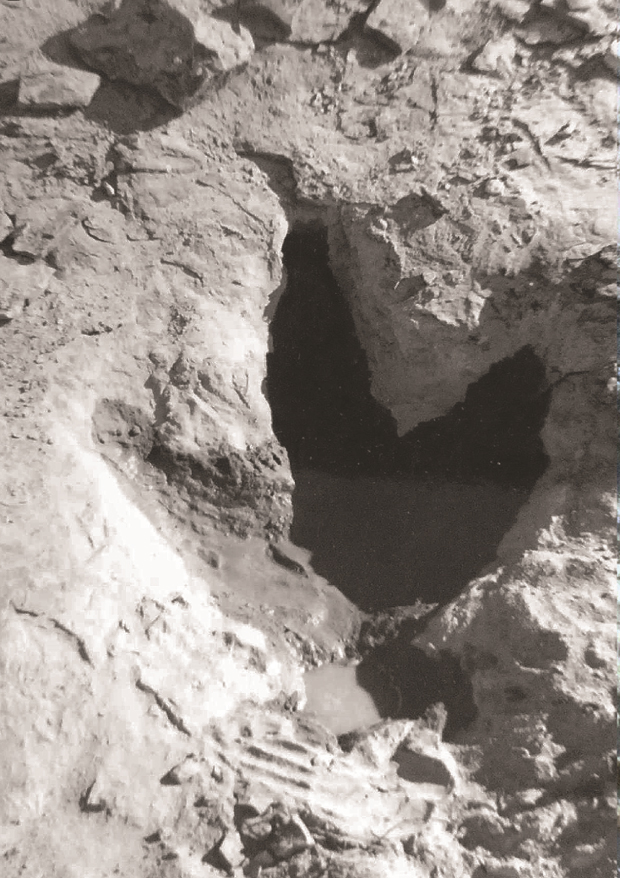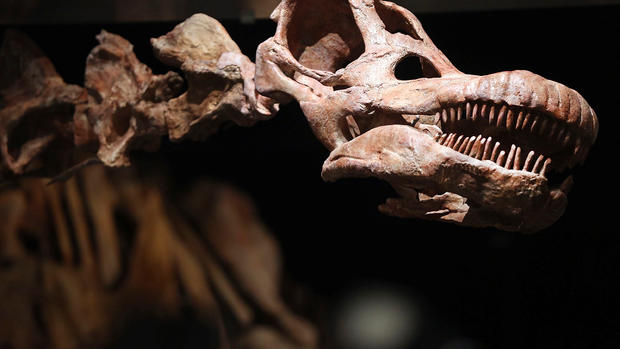Could you have outrun a T. rex?
Paleontologists have always disagreed about how fast a T. rex could run. One camp says that because of the large size of this fearsome dinosaur, it would be physically limited in its ability to run fast. Ecologically speaking, though, others believe that the predator must have been able to run fast to catch its prey.
Dinosaur bones offer little evidence about speed because researchers can't know for sure where the muscles went and how they were used for locomotion.
Trackways, footprints made by a single animal, are studied to determine how fast an animal was moving when they made the tracks. However, fossilized footprints are extremely rare because of the conditions needed to leave them (muddy ground that solidifies quickly). And even rarer in the case of a top predator like a T. rex, whose population would be small to maintain its position in the ecosystem.
But recently discovered fossilized footprints dating from about 66 million years ago, found in Wyoming's Lance Formation, a division of rocks known for its Late Cretaceous fossils, offer some evidence about how tyrannosaurs moved.
University of Alberta paleontologist Scott Persons and Sean Smith, Director of the Glenrock Paleon Museum in Wyoming, identified three sequential tracks that they believe belonged to either a sub-adult Tyrannosaurus rex or its smaller cousin, a Nanotyrannus lancensis.
The study, reported in Cretaceous Research, identifies the second multi-step tyrannosaur track site known to science and the first belonging to a T. rex or Nanotyrannus.
Because of the size of the footprints (the largest measured 18.5 inches long and 14.5 inches wide) and the imprint of a small fourth claw at the rear of one of the tracks, Persons and Smith identified it the prints as belonging to a carnivorous dinosaur. The age of the trackway and its location narrowed it down even more to a species of tyrannosaur.
"The tracks are just a bit too small to belong to a full grown T. rex," Persons said in a press release. "But they could very well be the tracks of an adolescent Tyrannosaurus rex, or they could belong to the closely-related smaller tyrannosaur Nanotyrannus. We really can't say which."
The dinosaur's stride measured about 10.9 feet long. Persons and Smith were also able to calculate the speed at which the dinosaur was walking at the time, which they estimated between 4.5 and 8 km per hour, or 2.7 to 5 mph. To put that in perspective, a human walks at an average pace of about 3 mph.
It also shows that, even when walking, tyrannosaurs moved faster and covered more ground in a single step than large herbivores like the duckbilled dinosaurs that also roamed the area at that time.
The dinosaur who left these tracks was walking at a slow pace, which is indicated by its footprints being spaced wide apart. Persons also noted that the fossils are of a tyrannosaur walking over muddy ground, so it was probably going at an even slower pace than usual.
But if you think it sounds like you could take that slow-moving dinosaur in a foot race, think again. Persons told CBS News there's little chance a human could outrun such a massive predator. "If you went back to the Cretaceous Period and jumped out of your time machine, then you would get eaten by a tyrannosaur," he said.

